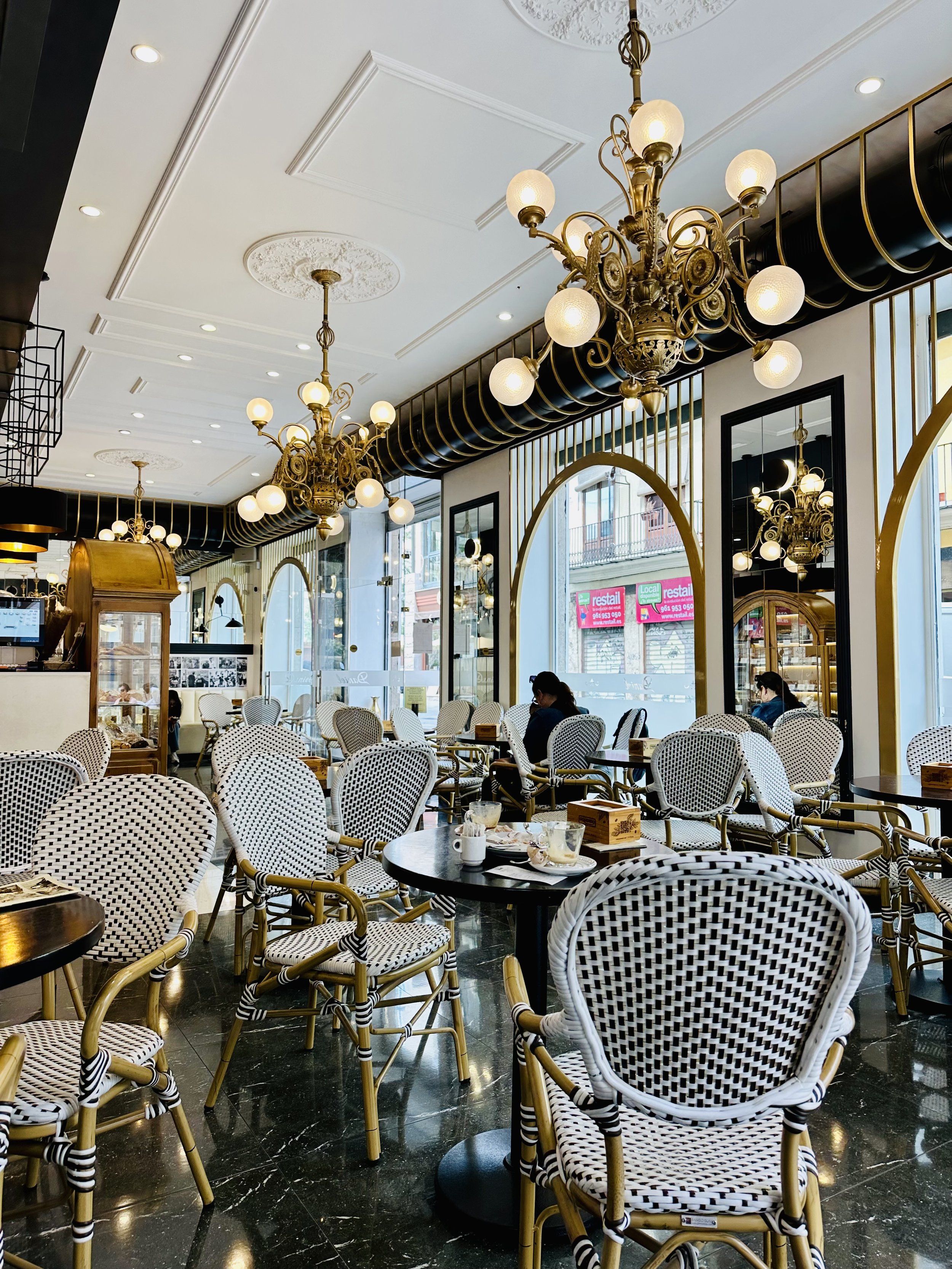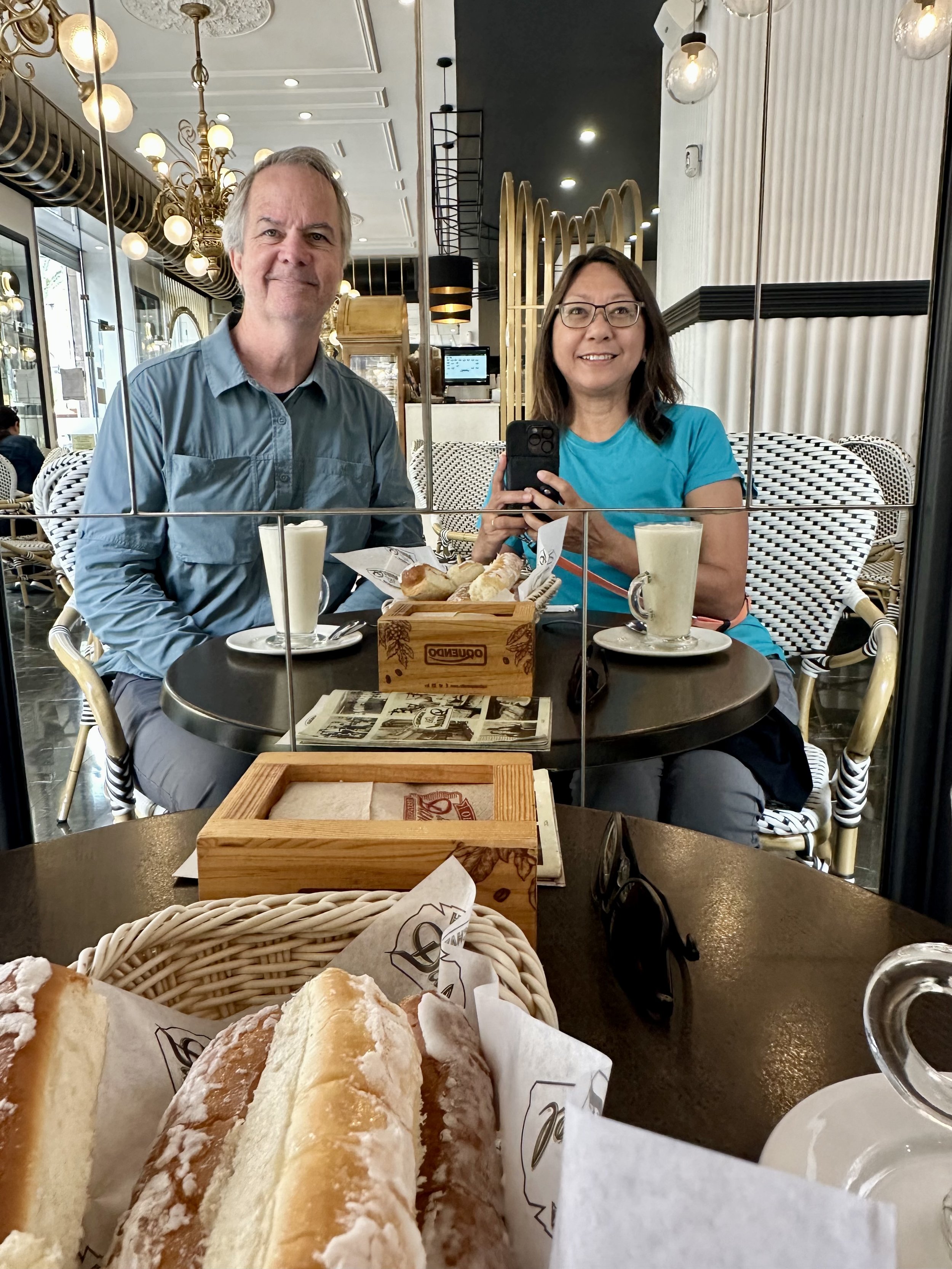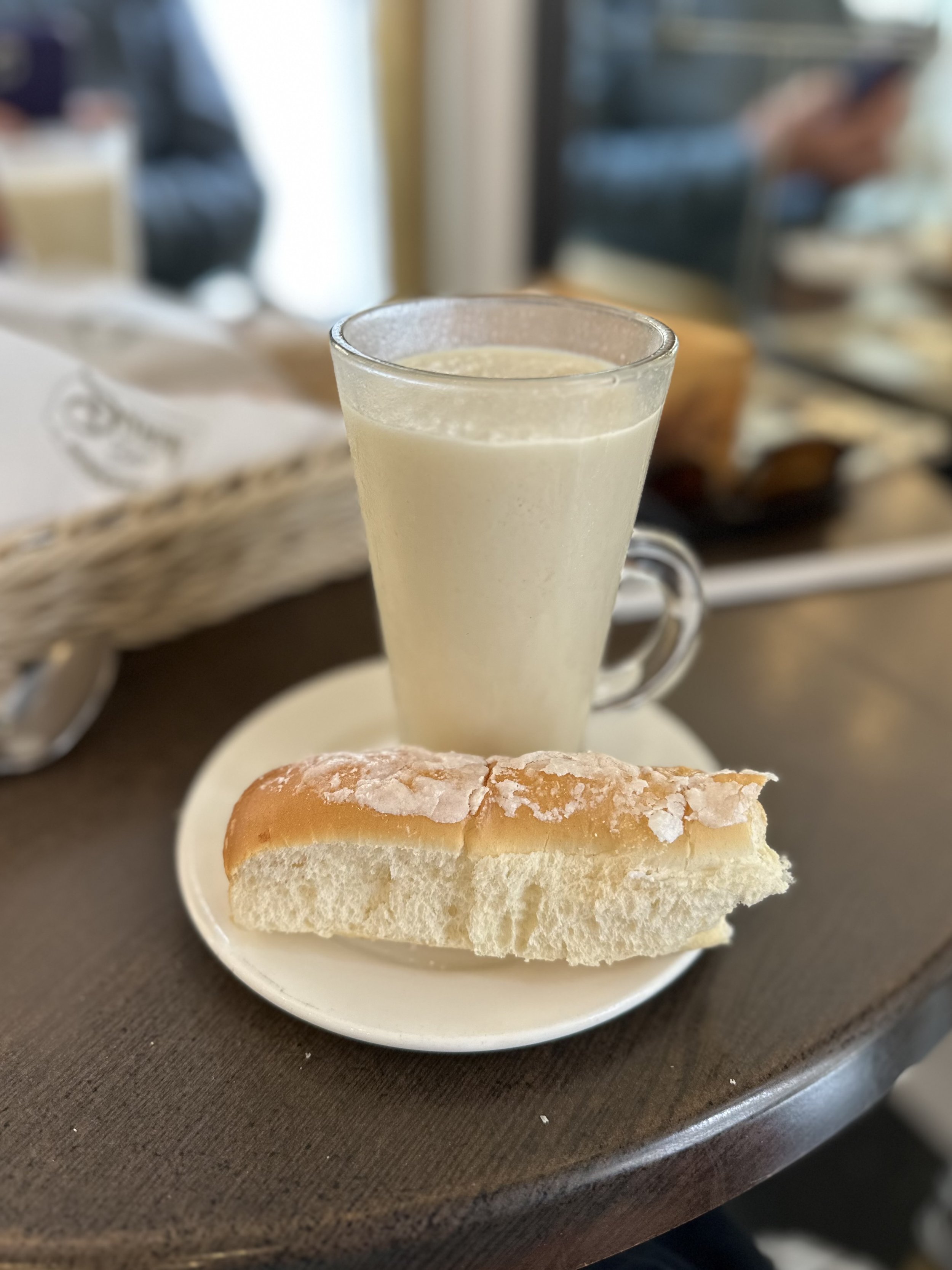Valencia Eats
We ate very well in Valencia! Our apartment had a full kitchen, and Steve enjoyed shopping in Central Market and cooking delicious meals at home. We also took advantage of the many wonderful (and reasonably priced) restaurants nearby.
Paella
The iconic Spanish dish known as paella comes from Valencia, where rice has been grown for more than one thousand years. North African Muslims brought rice to the Iberian Peninsula, and the Albufera wetlands immediately south of modern day Valencia were well-suited for this crop. Paella was a popular midday meal with Albuferan farm workers, who cooked the rice with other handy ingredients in large pans over an open fire. That’s why paella valenciana is made with rabbit and chicken (and sometimes snails), along with locally grown vegetables like romano beans (wide, flat green beans) garrafóns (large lima beans), and tomatoes. Traditional paella is cooked over an open fire in a thin layer, so that it develops good flavor and a caramelized, crispy crust. We enjoyed paella valenciana (without snails) and paella de pilotetes (meatballs), but our favorite was paella de verduras (vegetable paella), even if it wasn’t traditional.
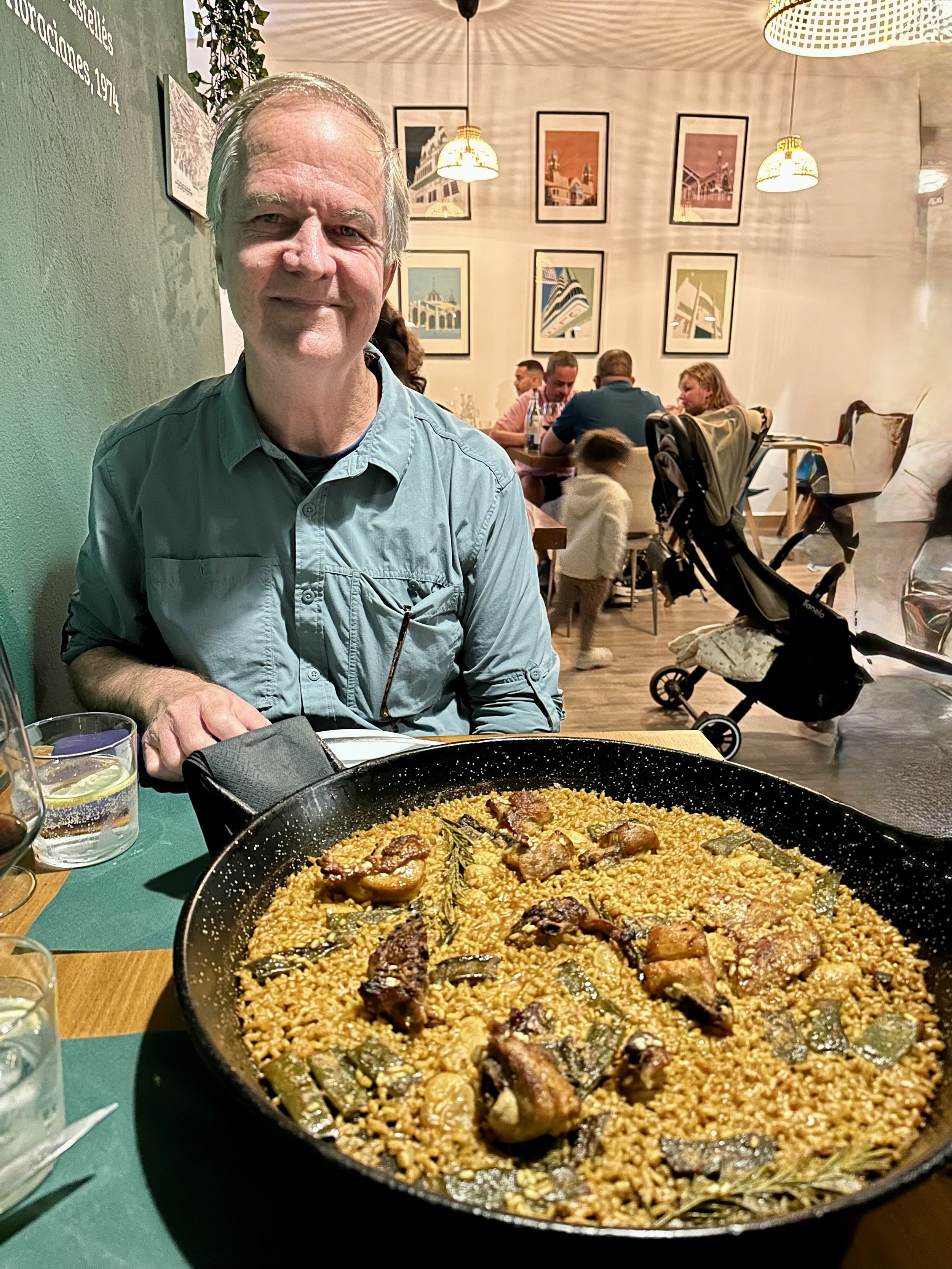
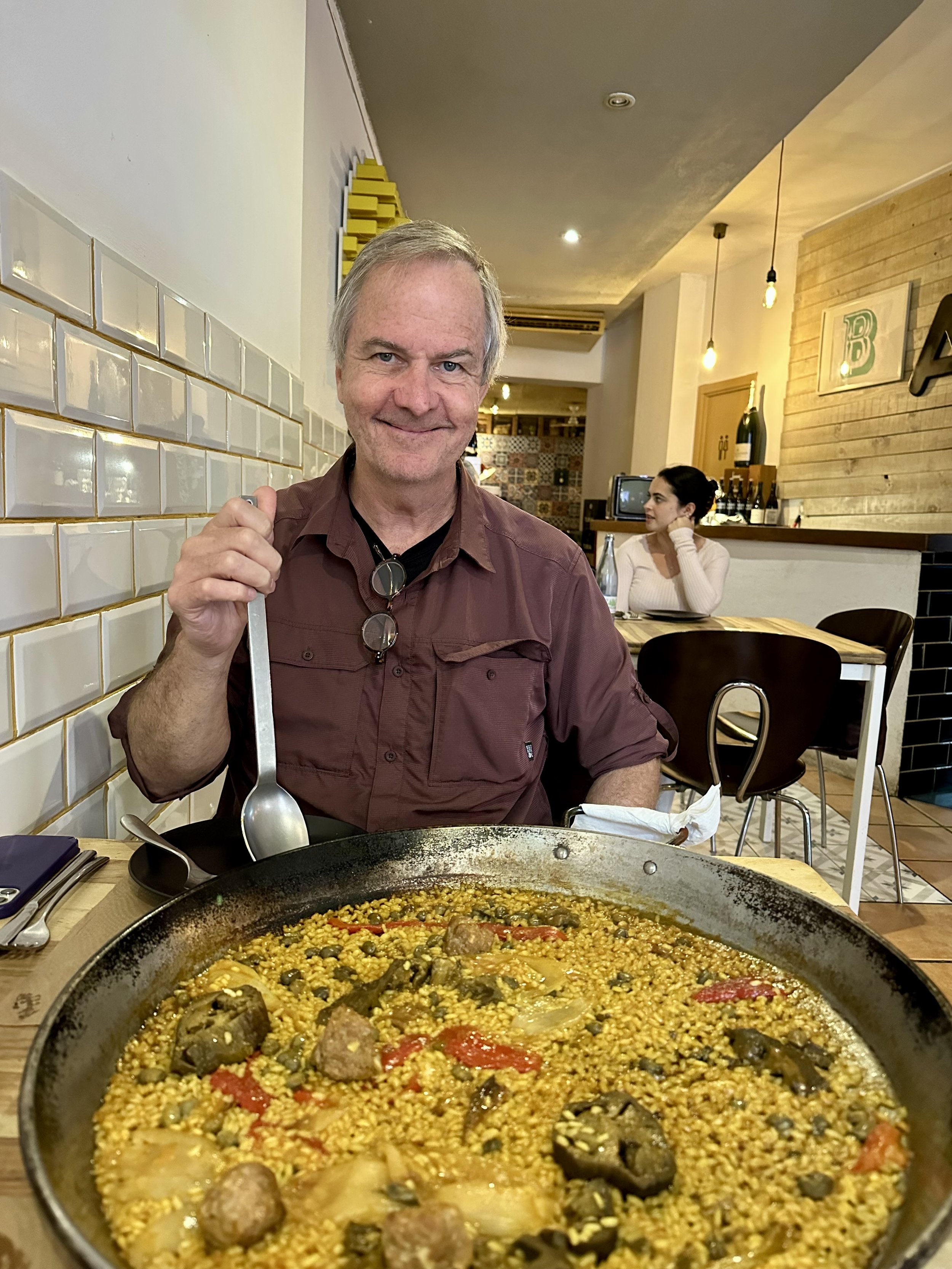
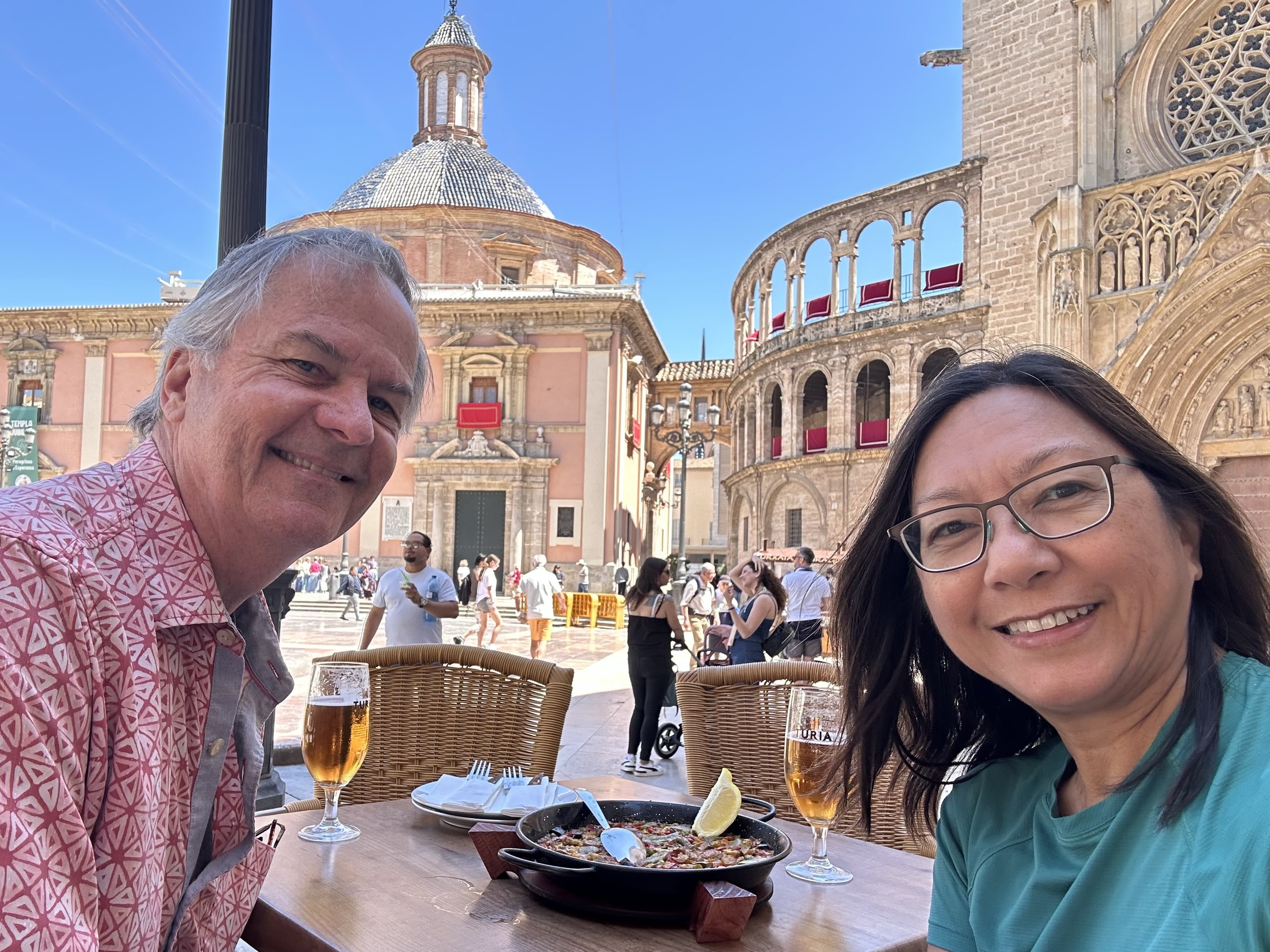
Menú del Día
We didn’t follow the Spanish custom of eating five meals a day, but we did enjoy the lunchtime tradition of the menú del día (a set menu with a fixed price). Valencia did the menú del día particularly well. Most restaurants offered a drink (beer, wine, or soda) and three courses (two dishes plus dessert or coffee) for around €15. We found these meals to be quite tasty, and though we didn't want or expect large portions, we always had more than our fill. We would make lunch our main meal for the day, and eat a light dinner at home.
Our favorites:
Cafetería El Trovador was popular with both local workers and foodies, and the excellent menú del día was just €13. I loved the gazpacho andaluz, which our friendly server cheerfully loaded with my choice of fresh toppings. Another highlight here was the carrillada (beef cheeks), which were meltingly tender and drowned in mouthwatering sauce.
L!A offered a Mediterranean cuisine in an airy, plant-filled dining room with a luxury spa vibe. The menú del día was a bit pricier (€17 not including a drink), but it was worth it for the ambience.
Restaurante OSLO was an upscale vegetarian restaurant. They offered a fantastic tasting menu: a shared platter with six starters, a main course, a three-dessert sampler, and two drinks for €37. We considered that a bargain for a ten-course gourmet meal with excellent wine.

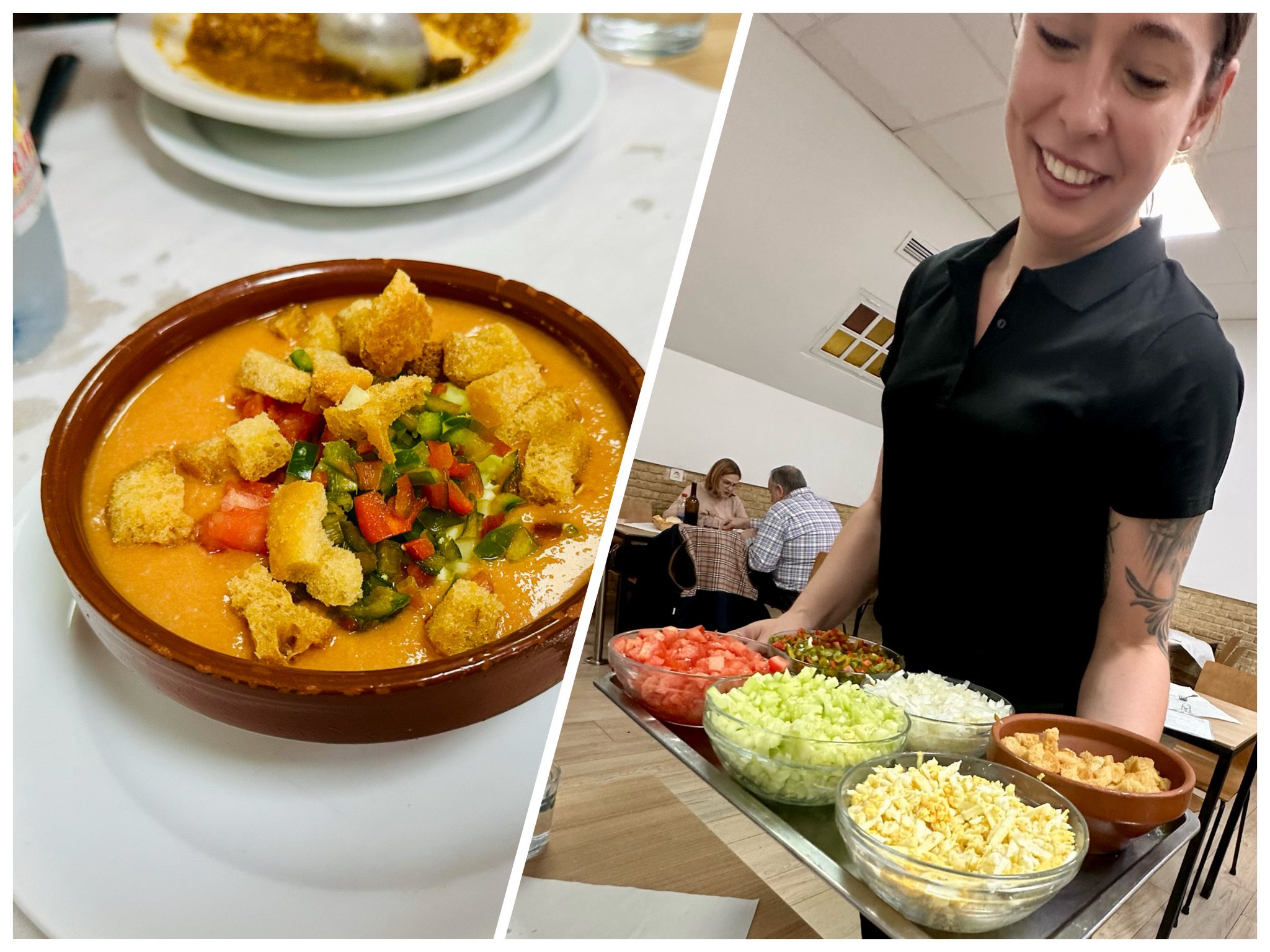
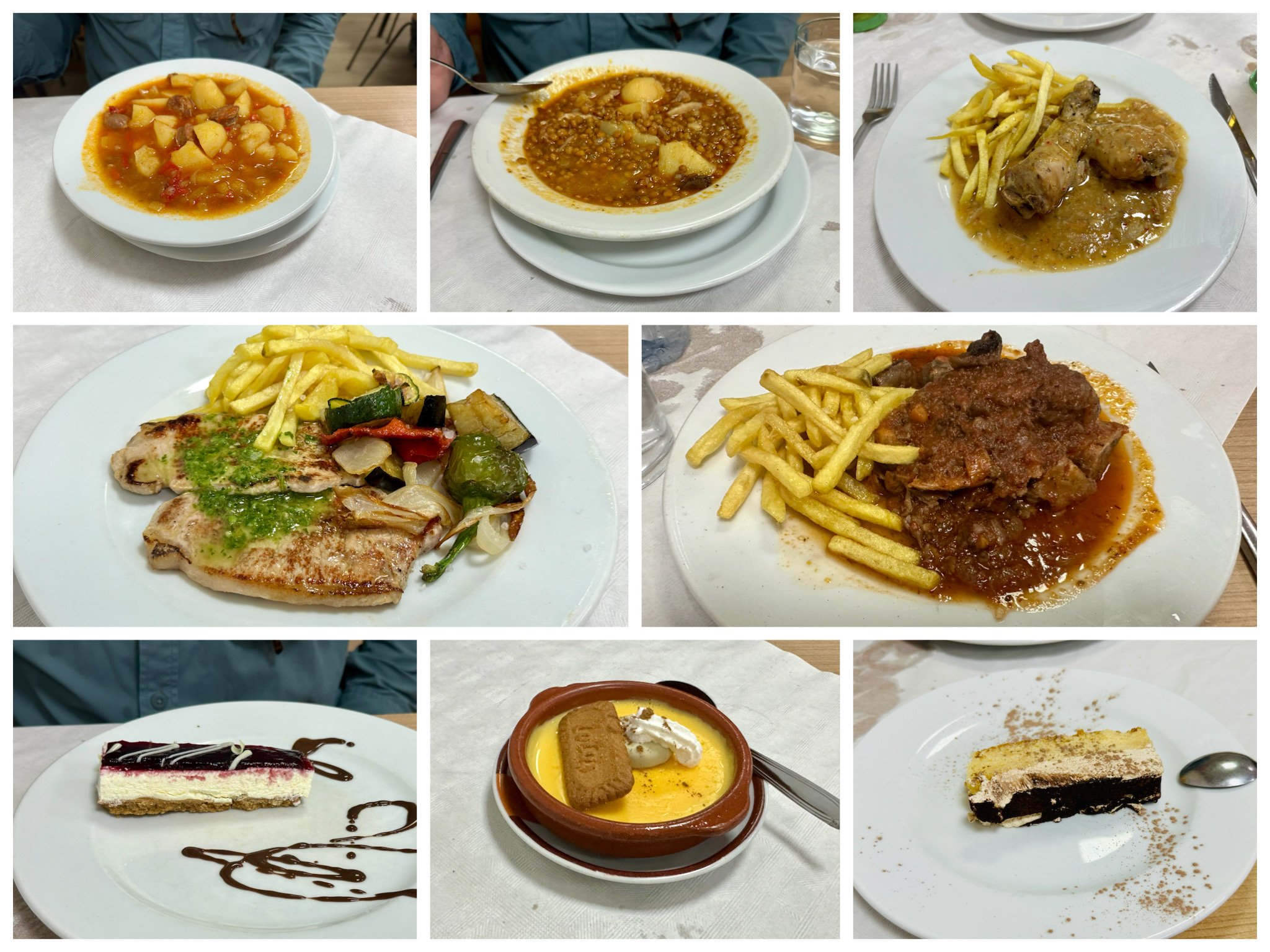
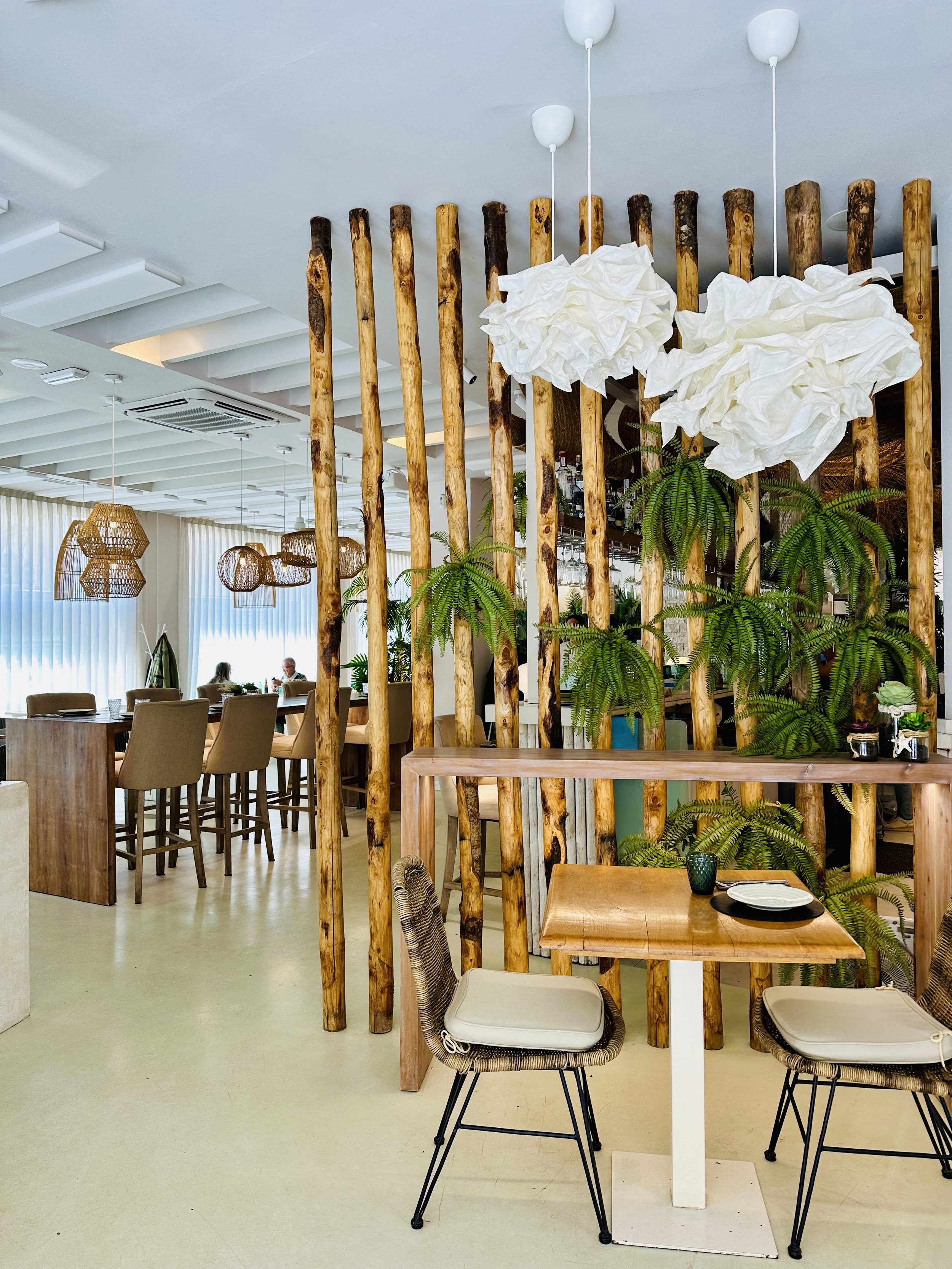
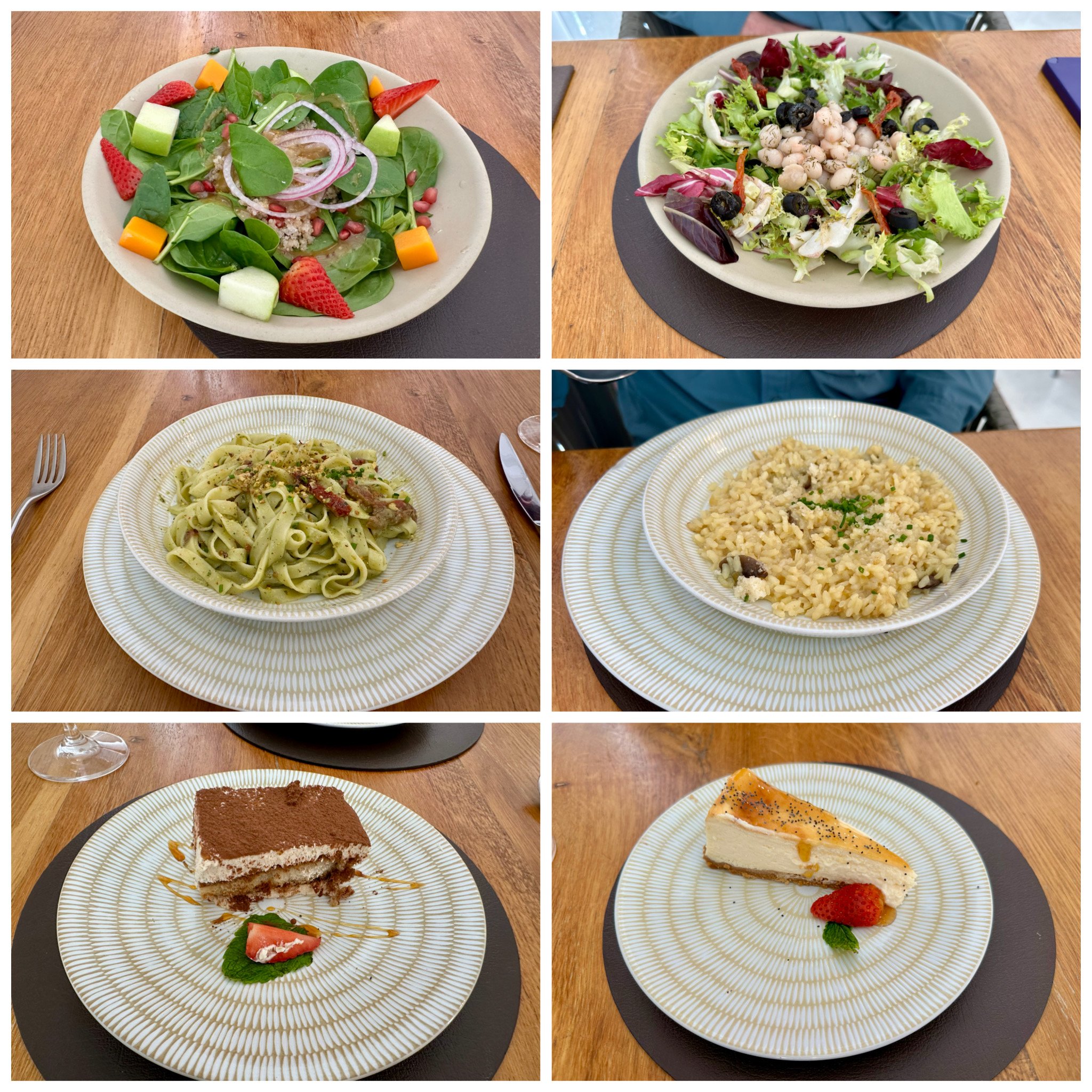
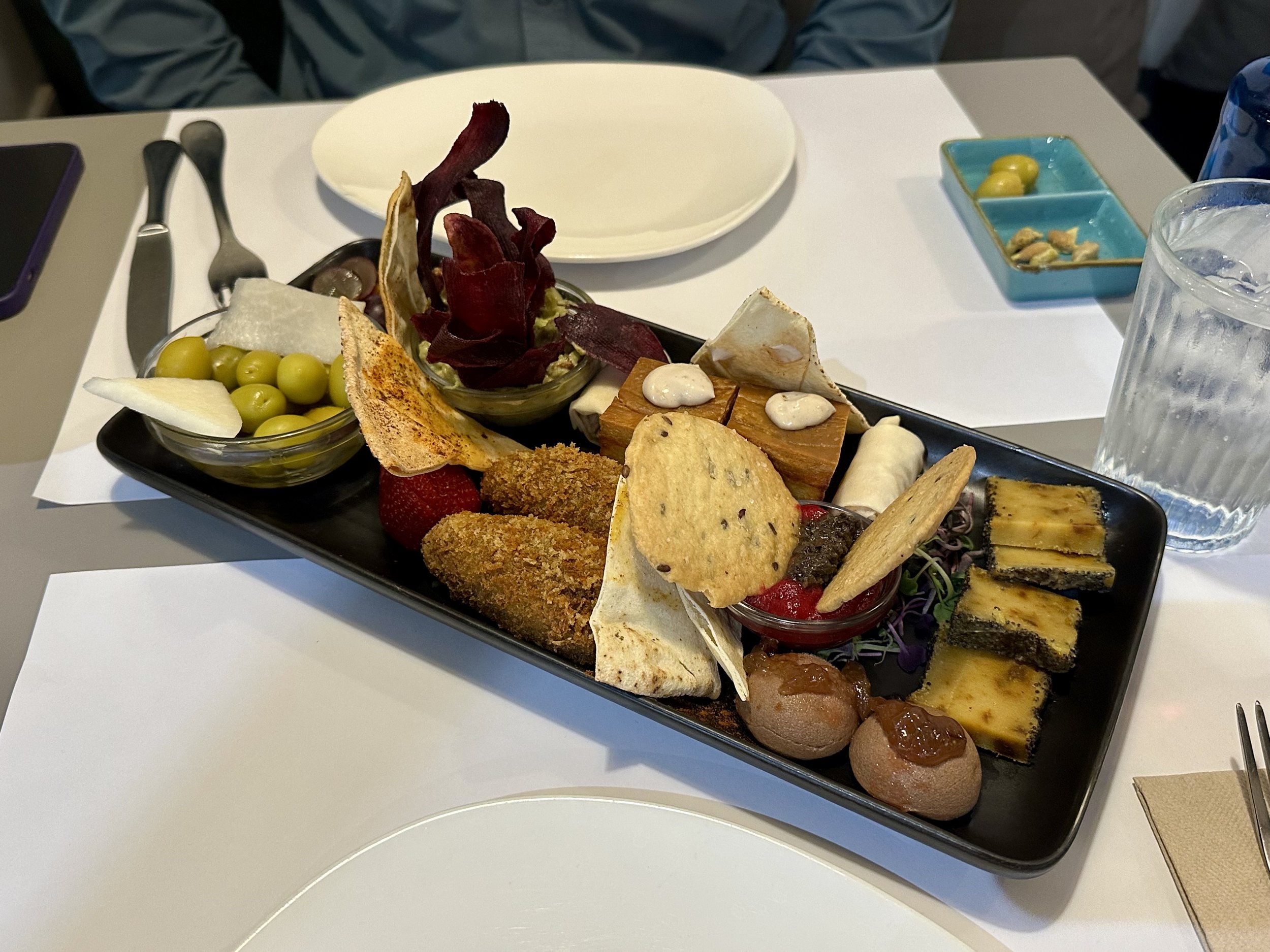
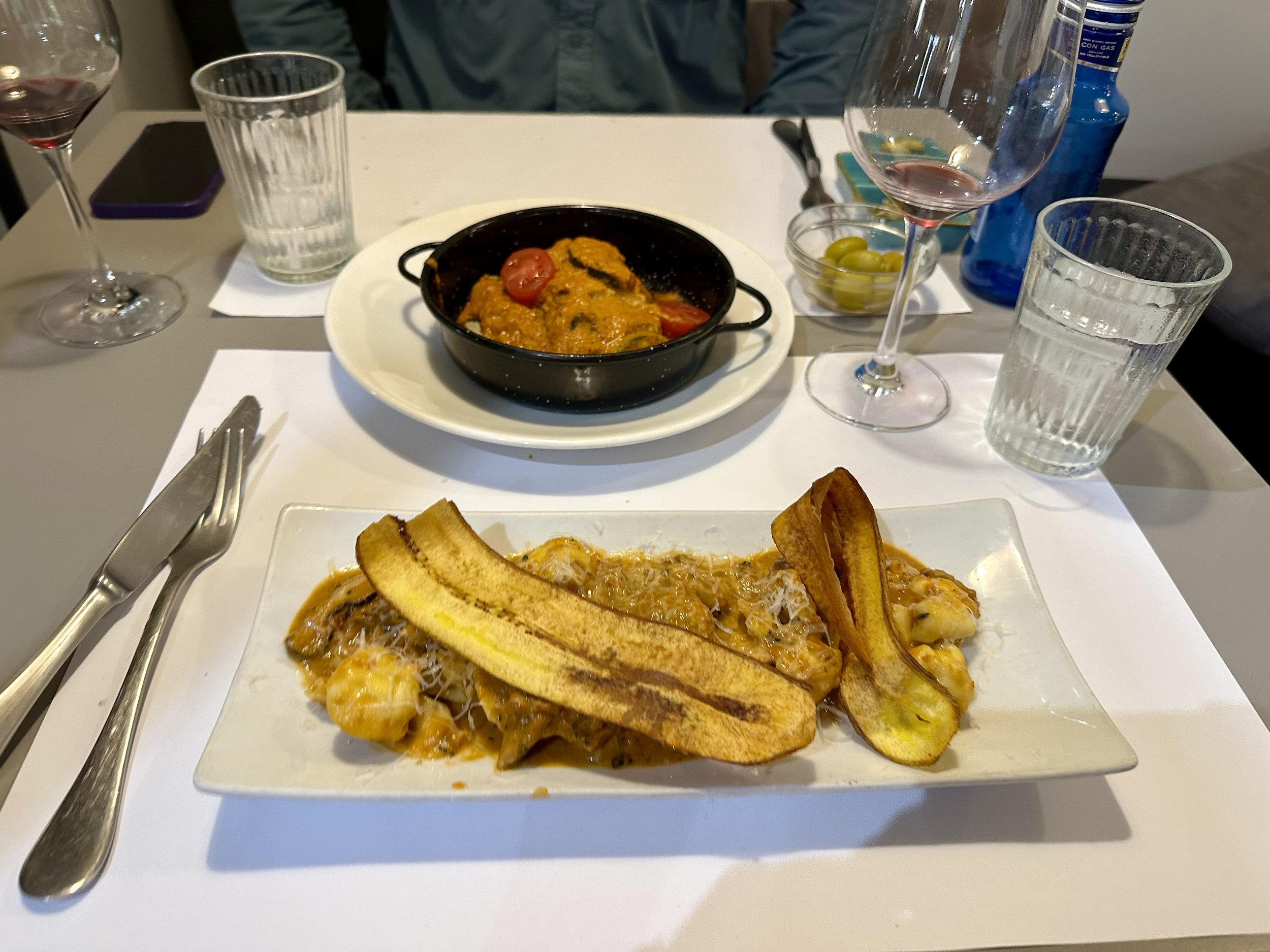
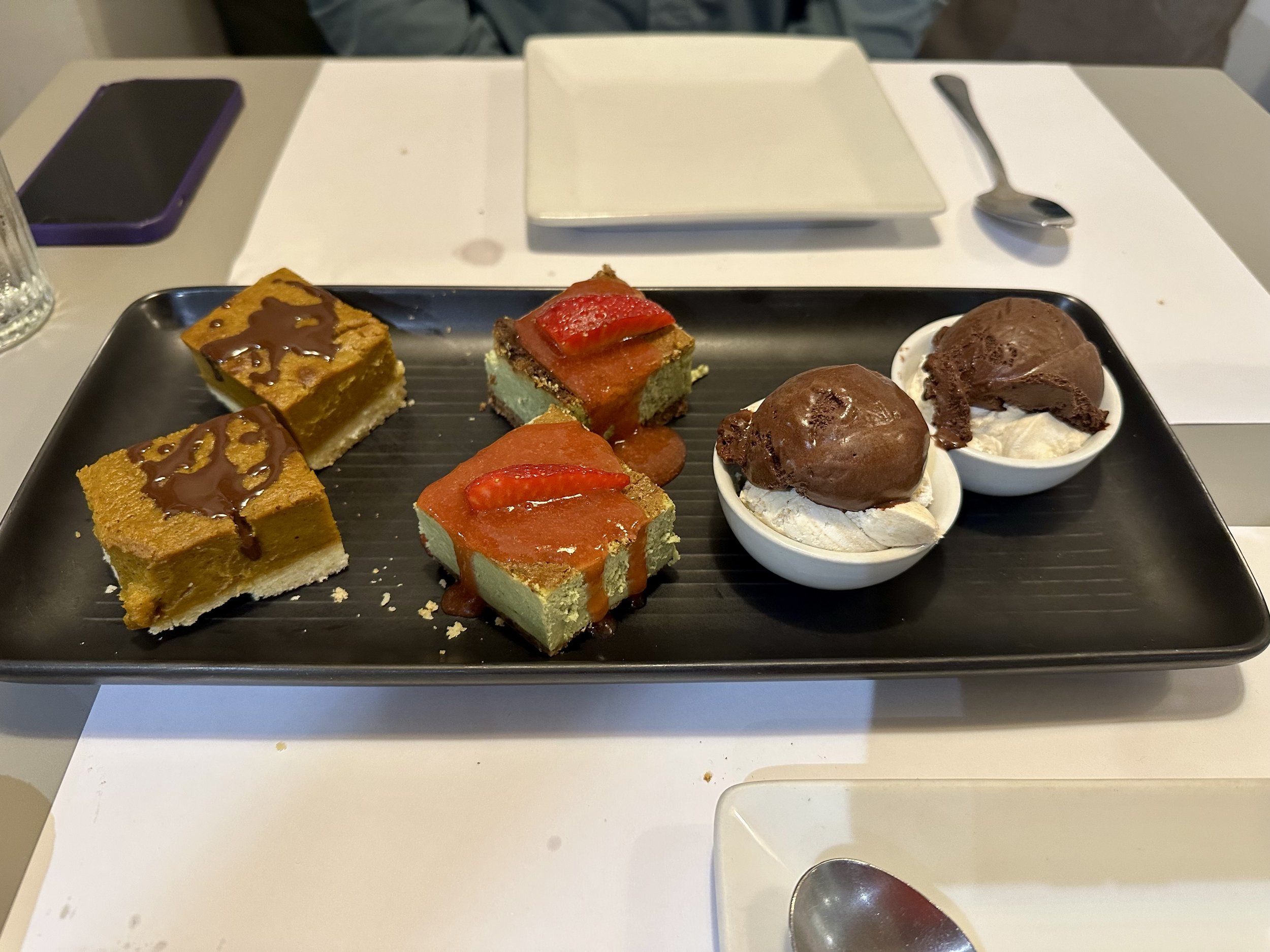
Treats
We were in Valencia during the Easter season, a time for traditional baked goods. We had already tasted torrijas (similar to French toast) in Seville. So this time we tried a mona de pascua (Easter monkey) a sweet, fluffy brioche shaped like an animal. It came with an egg, and we chose a dyed boiled egg instead of a chocolate one.
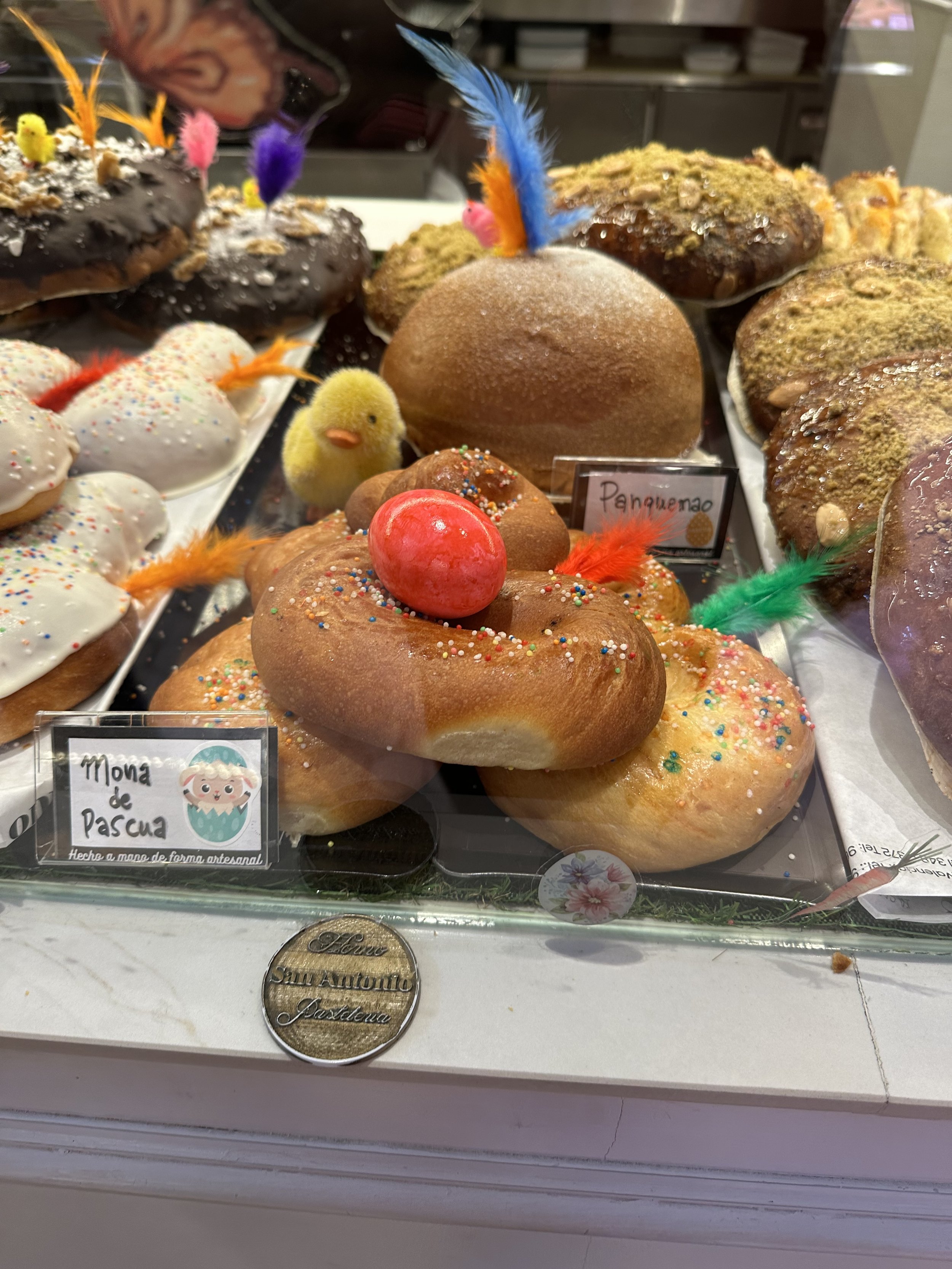
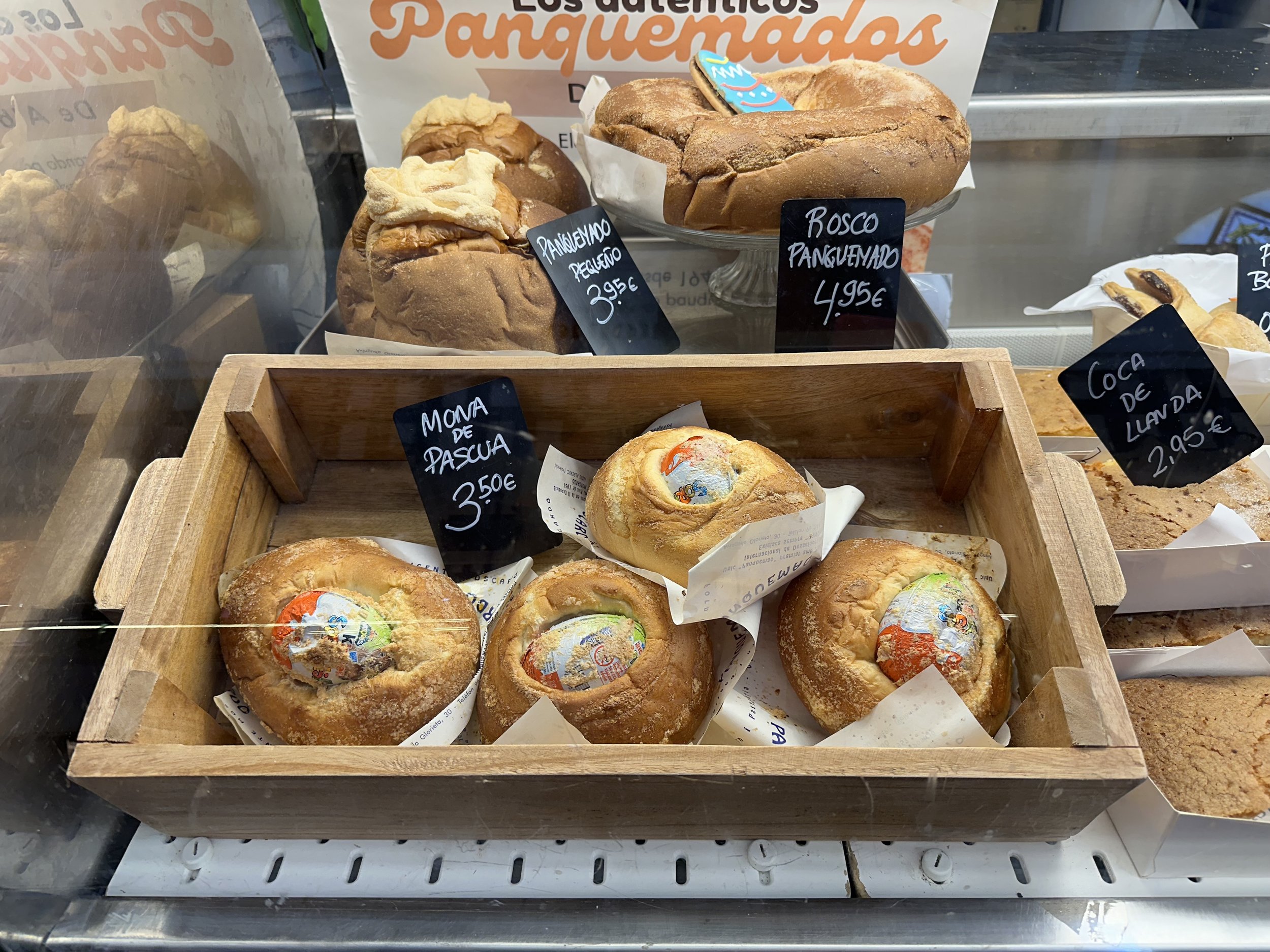

In Madrid, we had snacked on churros y chocolate. In Valencia, the popular snack is horchata y fartóns. We tried this at the city’s oldest and most famous horchatería, Daniel. The slightly sweet horchata (served frozen) was made from tiger nuts. The fartóns were soft and fluffy breadsticks, with just a touch of sugary icing. For me, it was a little strange to dip bread into a slushy, milky drink, but it was definitely tasty. I could get used to that frozen horchata. We agreed that churros and hot chocolate are better for cold weather, and horchata y fartóns are better for hot weather. Note, many establishments spelled it orxata, which is the same thing.
